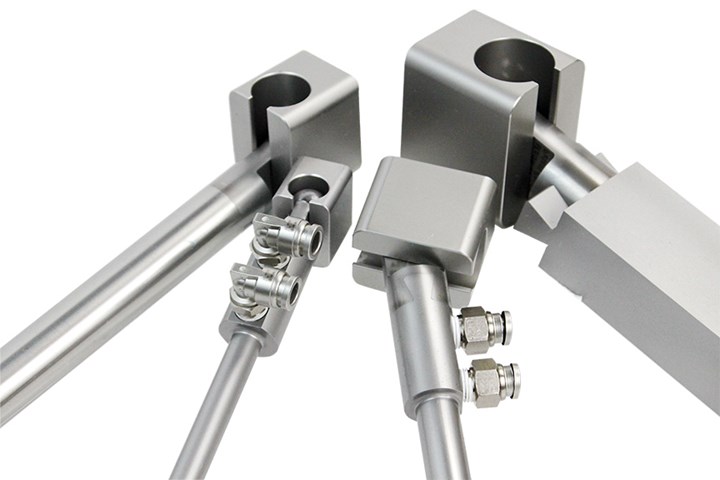Self-Adjusting Precision Lifter
DME’s Accualign lifter features a multi-axis self-adjustment system that compensates for misalignment.
DME has redesigned its proprietary Accualign lifters created to accommodate undercuts and allow for the successful ejection of parts. With older designs, any flaws in the original manufacture of the tool or plate movement caused by thermal expansion during molding can cause misalignment and put pressure on the lifter, ultimately leading it to bind or even break.
DME says its multi-axis self-adjustment system compensates for misalignment. The 3D movement is accomplished by applying a carbide ball adapter that rides in a hardened shoe. This allows the rod and bar to self-adjust to the correct non-binding position vertically. DME says this design is complemented by a dovetail connection between the rod/bar and the ball adapter to adjust horizontally.
Accualign lifters are available in both imperial or metric dimensions; rod with a guide bushing (and optional keeper key to secure the lift head); or square/rectangle bar with carbide roller guides for support and long life.

DME Accualign Lifter features a carbide ball adapter that rides in a hardened shoe for movement in multiple axes.
Related Content
-
In-Booth Mold-Cleaning Demonstrations
NPE2024: iD Additives is also featuring displays of chemical foaming agents, purging compounds, plastic mold cleaners, and water cleaning and maintenance systems.
-
AIM Institute Continues to Grow Plastics Education and Training on 10th Anniversary
The AIM institute was created in response to the rising need for skilled injection molding professionals, providing individuals with a fundamental understanding of plastic rheology and plastic flow through a mold.
-
Mold-Channel Cleaning Equipment Gains North American Distributor
PCS Company is now offering Polish firm FADO Group’s CoolingCare system for automated mold-channel cleaning.

